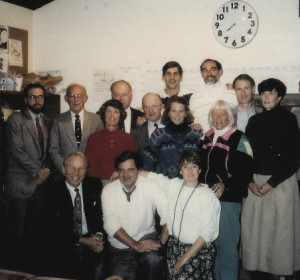LETS Committee files a report

Despite a century-long period during which the inconsistent rules pertaining to let cord situations (serve or during play of point) had been perpetuated, the recently formed committee came out strongly in favor of consistent treatment – i.e., play should be continuous on all let cords which, after striking the net, land fairly in the opponent’s court, whether it be on service or during play after the service.
The committee’s rationale for this recommendation were:
1. The rules with regard to the play of all lets should be consistent.
2. The recommended change would speed up the game.
3. There would be no further disputes over whether a let on service was indeed a let (heard by one, but not by others).
4. One less official (the let cord judge) would be required in matches that are officiated.
5. Playing the let on service will add interest to the game.
6. Over the long run, points won or lost on lets on service will probably even out between server and receiver. The let service that just dribbles over the net into the receiver’s service court will usually be a winner for the server. On the other hand, the let cord service that pops up high and drops into the receiver’s service court will often result in an easy winning return for the receiver. The bulk of the let services that just graze the net cord will be routinely returned by the receiver.
The committee recommended a two-year trial period for the new rule, during which all matches had to be played using the new rule. This was a period long enough to permit players to adapt to, and become comfortable with the rule, thereby avoiding the natural human tendency to react negatively to change without giving it a try. This trial period recommendation was tabled by the APTA Board until 1996, when it was again considered and finally adopted. After the two-year trial period ended in 1998, the “no-let” rule was approved and became official in all play.
Source: Platform Tennis News, Summer & Fall 1993



